
The Crafting
The elaboration of Cognac
A history of Cognac
Cognac is a fine spirit, produced in the region around the city of Cognac, on most of the départements of Charente and Charente-Maritime. Since 1938, this region is divided into different "crus", which are Grande-Champagne, 1st cru of Cognac (the finest spirits), and Petite-Champagne (also very fine).
According to legend, the double distilling was invented by the knight Jacques de la Croix Maron de Segonzac, who dreamt that Satan wanted to damn his soul: he was in the Devil's cauldron, but his soul resisted to a first cooking, so Satan had to cook it a second time. Upon his awackening, the knight thought of applying his dream to the vin des Charentes, using a technique called the "double-chauffe" (double-heating).
The Crafting of Cognac
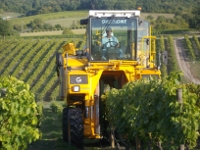
The grape harvesting usually starts in late september, and lasts around 15 days (depending on the weather during summer).
Originally, the vin des Charentes was of poor quality, only distilled so that it would keep, and was close to some kind of brandy. It was exported to the north of Europe for blending (as any wine blended with spirit will keep longer).
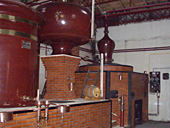
The double distillation results in refined alcohol. The distilling is done twice in a copper still, called a "charentais" still. The wine is distilled a first time ("première chauffe", first heating) with 30% volume : the distiller separates – according to his know-how, and the degree of alcohol - the "têtes" (the heads, the first condensates), the "queues" (the tails, the last condensates), and the "brouillis". This "brouillis" is distilled a second time (called the "bonne chauffe", the good heating). The distiller separates the heads and tails again, but also what is called the "coeur" (the heart), which is the spirit placed in oak casks for ageing.
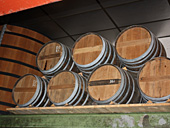
It is during these years of ageing that the spirit becomes cognac, thanks to the exchanges with the surrounding atmosphere and the oak cask. These exchanges allow the spirit to develop its characteristic aroma and amber colour. Once bottled, cognac will stop ageing.
The crus of Cognac
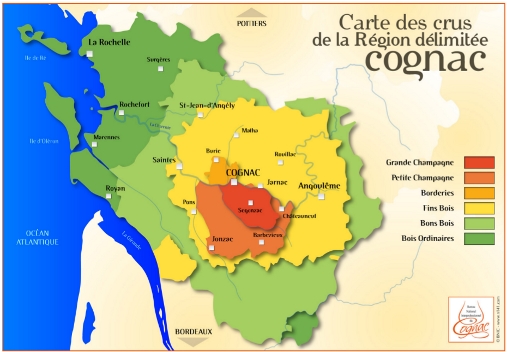
- The designation Grande Champagne
- These are very fine and light spirits, with a mostly floral bouquet, needing a long oak-ageing to reach full maturity.
- The designation Petite Champagne
- These possess the same characteristics as those of Grande Champagne, only not the same extreme finesse.
- The Borderies
- These are round and soft spirits, with fine bouquets, characterized by an aroma of violet. They have the reputation of acquiring optimal quality and maturity sooner than spirits from Champagne.
- The designation Fins Bois
- These spirits are round, supple and their bouquet will remind the taster of pressed grape. They age quite fast.
- The designation Bons Bois
- These spirits age rapidly.
- The Bois à Terroir rd Bois Ordinaires
- These also age rapidly, and possess a distinctive aroma of the local "terroir".
The elaboration of Pineau
A history of Pineau
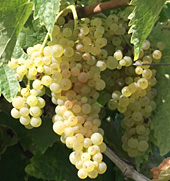
The beginnings of the Pineau des Charentes are not quite certain. It is said that Pineau was first made by accident: in 1589, a charentais wine grower - not quite paying enough attention to what he was doing - poured grape must in a barrel containing cognac. A few years later, that barrel was needed. On opening it, he discovered a sumptuous beverage, now known as the Pineau des Charentes.
The Pineau was disregarded for some time after its invention, as it was kept for family consumption, but it was the first liqueur wine to be registered designation of origin.
The Crafting of Pineau
The particularity of the designation Pineau des Charentes is based on one criterion: it is the liqueur wine made with the fruit from the same vineyard used to produce the cognac at its base.
- The Pressing
- The must is obtained from pressing the grape crop. The white grapes are pressed as soon as they are picked, whereas the red are left to macerate several hours, so that their juice becomes the desired colour.
- The Fortification
- After pressing, the obtained grape must is blended with cognac (containing 60% alcohol, and aged at least one year). This step interrupts the fermentation of the must. In the end, the Pineau will contain between 16° and 22° of alcohol.
- The Ageing
- It must be made in oak casks. For the "Pineau blanc" (white Pineau), the ageing (also called "élevage") must last at least 18 months. For the "Pineau rosé" (red Pineau), the ageing must last at least 12 months. This ageing phase provides the gustatory harmony of Pineau, and endows it with its characteristic aromas of vanilla and nut. If the Pineau is left to age longer (5 or 10 years), it become "Vieux et très Vieux Pineau des Charentes" (old and very old Pineau des Charentes)

-L'abus d'alcool est dangereux pour la santé.- Plan du site - Mentions légales